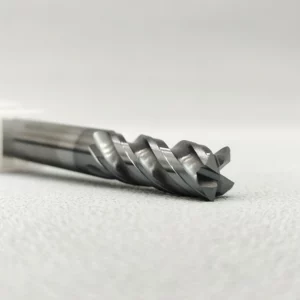Table of Contents
ToggleHow to Choose the Right Center Cutting End Mill Bit for Your Woodworking Project
When it comes to woodworking projects, choosing the right tools is essential for achieving the desired results
One such tool that plays a crucial role in woodworking is the center cutting end mill bit. This versatile tool is used to shape, carve, and cut wood with precision. However, with so many options available in the market, selecting the right center cutting end mill bit for your specific project can be overwhelming. In this article, we will discuss some important factors to consider that will guide you in making the right choice.
Firstly, it is important to understand the different types of center cutting end mill bits available
These include straight flute, spiral flute, and ball nose end mills. Each type has its own unique design and functionality. For instance, straight flute end mills are ideal for cutting projects that require a smooth finish, while spiral flute end mills are better suited for cutting through tough materials like hardwood. On the other hand, ball nose end mills are perfect for creating detailed designs and intricate patterns.
Next, consider the material of the end mill bit
Depending on your woodworking project, you may need an end mill bit made of high-speed steel (HSS), carbide, or cobalt. HSS is a cost-effective option and works well for softer woods, while carbide end mill bits are more durable and can withstand tougher materials. Cobalt end mill bits are known for their heat resistance, making them suitable for high-speed cutting applications.
Furthermore, it is crucial to determine the appropriate diameter and length of the end mill bit
The diameter refers to the width of the cutting portion, and the length refers to the amount of reach the bit has. The choice of diameter and length will depend on the specific woodworking task at hand. For example, if you need to make deep cuts or drill holes in the material, a longer end mill bit will be required. On the other hand, a smaller diameter will produce finer and more detailed cuts.
Additionally, consider the number of flutes on the end mill bit. Flutes are the grooves or channels on the cutting portion of the tool. The number of flutes affects the chip removal, cutting speed, and surface finish. Generally, end mill bits with more flutes provide smoother cuts and better chip evacuation. However, fewer flutes may be preferred for certain tasks that require higher cutting speeds.
Moreover, it is essential to pay attention to the quality and brand reputation when purchasing a center cutting end mill bit
Investing in a high-quality tool from a reputable brand ensures durability, precision, and longevity. Reading customer reviews and seeking recommendations from experienced woodworkers can help in making an informed decision.
In conclusion, choosing the right center cutting end mill bit is crucial for achieving superior results in woodworking projects. Consider factors such as the type, material, diameter, length, number of flutes, and brand reputation. By carefully evaluating these aspects, you can select the perfect end mill bit that meets your specific requirements. Whether you are carving intricate designs or cutting through tough materials, the right center cutting end mill bit will enhance your woodworking experience and deliver exceptional craftsmanship.
So, when embarking on your next woodworking project, remember to choose the center cutting end mill bit that perfectly complements your woodworking needs. With the right tool in hand, you can bring your creations to life with ease and precision
